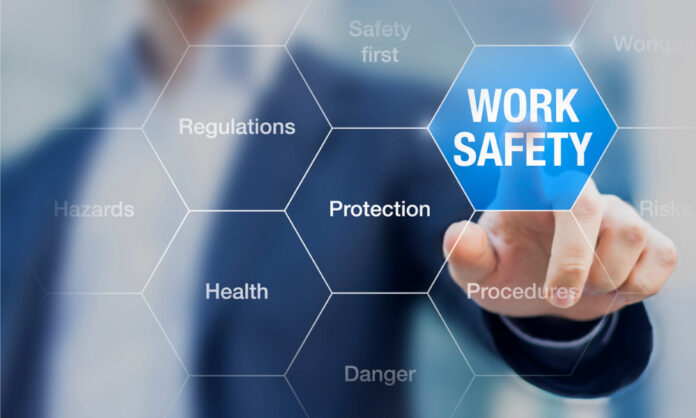Getting injured at work is something no one wants to go through – employees and employers in kind. Yet, each year, hundreds of thousands of people are affected by work-related illnesses and accidents – according to the Health and Safety Executive, 1.8 million working people suffered from a work-related illness in 2021/22, and 565,000 sustained an injury at work.
To prevent these statistics from growing further, the government sets out health and safety rights for workers. Learning what they are is key to keeping safe at work – and holding your employer to account in the event they don’t meet their responsibilities and you are hurt.
In this guide, find out the main health and safety rights you have at work and what to do if the worst happens and you’re hurt.
What are employees’ main health and safety rights?
The main health and safety rights that employees are afforded by decades of legislation are as follows:
– Adequate training of staff to ensure health and safety procedures are understood and adhered to
– Adequate welfare provisions for staff at work
– A safe working environment that is properly maintained and where operations within it are conducted safely
– Suitable provision of relevant information, instruction, and supervision.
As part of this, employers must assess the risks within the workplace, provide information about said risks, and consult with their employees on issues of health and safety. Alongside training, information on relevant health and safety topics should be clearly displayed around the workplace.
What should you do if you’re hurt at work?
If you are hurt at work, then it’s important that you hold the employer to account. It can be daunting, but failure to do so can mean others are put at risk from the same dangers.
What’s more, if your injuries are severe, compensation can help you recover or learn to live with your injury. For instance, brain injury solicitors may be able to help you to claim funds to cover lost earnings, the cost of adapting your home, and more.
If you are hurt at work and the response is, it’s important you first visit a doctor as soon as possible, so the injury can be added to your medical records. The accident should be reported at work and recorded in an accident book too.
From there, you should receive sick pay if you are eligible, or be able to claim Universal Credit. If the injury was your employer’s fault you may then wish to claim compensation via a personal injury claim.
When your injuries are severe, you need rehabilitation, which physical therapy can address. It’s essential to actively participate in your physical therapy program and communicate openly with your therapist about your goals, concerns, and any changes in your condition. With dedication and consistent effort, physical therapy plays a significant role in helping you regain mobility, strength, and independence after a workplace injury.
Employers must ensure the safety, health, and well-being of their employees in the workplace. When an employee is a victim of personal injury on the job, employers must handle the situation with care, compassion, and in accordance with relevant laws and regulations.
Employers should offer support and assistance to injured employees, including helping them navigate the workers’ compensation process if applicable, arranging transportation to medical facilities, and providing resources for medical treatment and rehabilitation.
Moreover, employers should offer access to employee assistance programs (EAPs) or counseling services to support the mental and emotional well-being of the injured employee, particularly if the injury has caused psychological distress or trauma.
By treating employees who are victims of personal injury with empathy, support, and a commitment to their well-being, employers can demonstrate their dedication to creating a safe and healthy workplace culture.
Read Also
- Ketamine-Assisted Therapies: Impacts on Employee WellbeingWorkplace stress is common today. Many employees feel tired, anxious, or burned out. Regular therapy can help, but some people need more support. Ketamine-assisted therapy is showing good results for mental health. A ketamine-assisted therapist guides each session safely. This therapy can improve mood, focus, and energy. Learning more about it can help teams stay… Read more: Ketamine-Assisted Therapies: Impacts on Employee Wellbeing
- The Future of Men’s Health: Why Telehealth Is Here to StayTelehealth isn’t just a pandemic trend that faded into the background. For Australian men, it has become one of the most practical, time-saving, and stress-free ways to manage everyday health — and it’s shaping the future of how we access care. Platforms like DOCTO, an Australian online doctor and specialist telehealth service, are leading the… Read more: The Future of Men’s Health: Why Telehealth Is Here to Stay
- How to Build a Simple, Clean Skincare Routine ?You don’t need a complicated skincare routine. It doesn’t have to be something that requires twenty different products and confusing steps. Your routine works well with just a few high-quality clean ingredients. The beauty industry keeps pushing more products, but your skin actually needs less. You only need a simple approach to get better results… Read more: How to Build a Simple, Clean Skincare Routine ?
- How Preventive Dental Care Supports Overall HealthHave you ever wondered how a simple dental checkup could impact your entire body? Oral health is more than just a bright smile. Studies show that poor dental habits can contribute to serious health problems. Gum disease and tooth decay are linked to heart disease, diabetes, and infections. Yet, many people overlook preventive dental care.… Read more: How Preventive Dental Care Supports Overall Health
- Seeing Clearly in a High-Tech World: A Deep Dive into Advanced Vision Care ServicesProtecting your eyesight isn’t optional—it’s essential. Modern eye care has evolved far beyond basic exams, offering advanced diagnostics, personalized treatments, and surgical innovations that keep vision sharp for life. A leading example is Intermountain Eye Center, home to specialists like Dr Fishburn Boise, where patients receive comprehensive, high-level vision care designed to preserve long-term eye… Read more: Seeing Clearly in a High-Tech World: A Deep Dive into Advanced Vision Care Services






